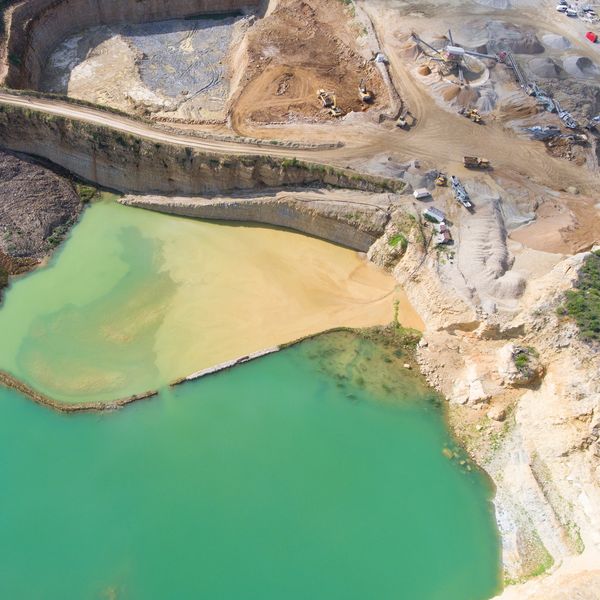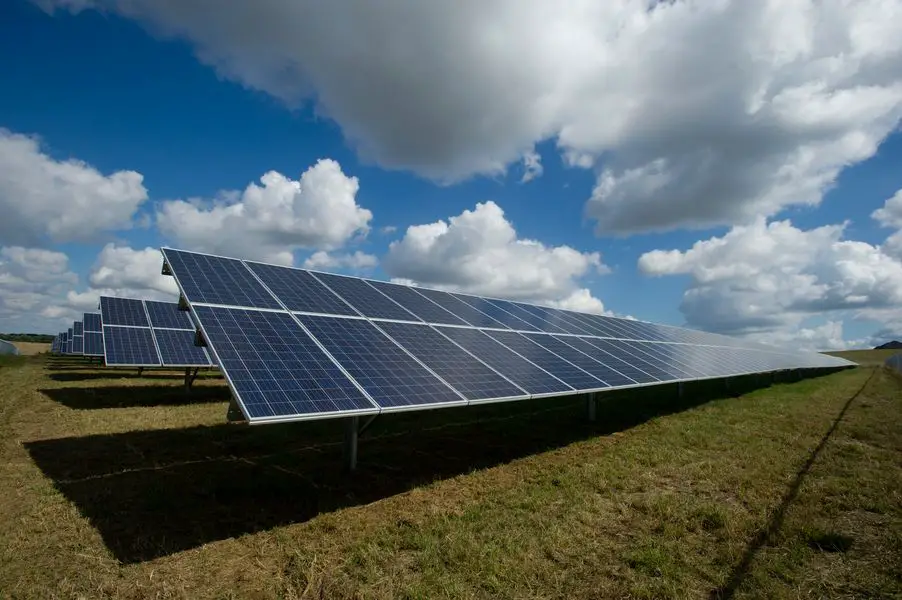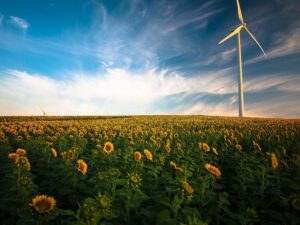Solar panels often emerge as one of the hopes for the world’s journey toward a greener future. While they undeniably hold the potential to reshape our energy consumption patterns, it’s essential to examine the Carbon Footprint of Solar Panels.
Industries and governments worldwide are pushing for Net-Zero emissions, a value that is closely related to the concept of Carbon Footprint. Amid discussions on building strategies to reduce fossil fuel dependency, renewable energy has been the cornerstone of this green transformation.
Nevertheless, these new technologies are not entirely carbon-neutral. Their requirements for rare earth materials, intensive manufacturing, and distribution are becoming a concern when envisioning carbon-neutral markets.

Definition of Carbon Footprint
Carbon footprint is the amount of carbon emitted during a product’s production, use, and disposal.
The growing interest in reducing the carbon footprint has been mostly associated with reducing reliance on fossil fuels, but this does not imply that other energy sources do not have their CO2 emission. In other words, despite relying on renewable sources, the production, distribution, and use of renewable energy can also produce a significant amount of carbon released into the atmosphere and contribute to global warming.
Carbon Footprint of Solar Panels – Are They Zero Emissions?
Among the various renewable technologies, solar panel adoption has been expanding massively in recent years due to technological advances that reduced the investment price of this material.
Additionally, industries and households are adopting the use of solar panels to reduce their carbon footprint. Nevertheless, it is estimated that each solar panel emits 50g of CO2 per kWh produced during the first few years. This initial emission is mostly linked to the manufacturing process involving intense mining, large supply chain distribution, and reliance on hard-to-abate chemicals.
Extraction of Raw Materials – Where They Are Mined
The main source of carbon emission from solar panel production is the mining process which focuses on extracting silicon, silver, copper, indium, tellurium, and lithium for solar battery storage.
The environmental impact caused by mining metals for solar panels spans from high CO2 emissions due to fossil fuel burning to feed the heavy machinery to severe water contamination caused by spills of oils and chemicals in the area.
More importantly, mining of these materials is currently occurring in countries like Brazil, China, Russia, and Vietnam, which all have lax environmental regulations and allow for very high emitting operations.
Moreover, as these resources become less abundant and harder to extract, countries tend to resource to even more polluting techniques.

Photo by Curioso Photography on Unsplash
The Lifetime of Solar Panels
The National Renewable Energy Laboratory recently presented a compilation of a Life Cycle Analysis on the GHG emissions of Solar Panels, noticing that, on average, 60-70% of emissions occur during extraction of raw materials, meanwhile decommission and disposal of the panels account for 5-20% of the emissions linked to the solar panels. These figures highlight the importance of adequately accounting for the final disposal of these products at end-of-life which will become a serious issue if not accounted for in coming years.
On a positive note, most solar panels have an estimated lifetime of nearly 20 years considering proper maintenance and operation are followed. This means that major recycling companies have a little over a decade to propose an environmentally friendly solution to reduce the environmental impacts of the disposal process. When considering disposal, the high concentration of toxic substances that compose the solar panels is the main challenge.
Finding proper ways to separate the various metals used, isolate and properly refurbish or dispose of them is one of the main focuses of research centres worldwide.

Photo by American Public Power Association
Land Usage of Solar Farms
Optimizing the current production, use, and installation of solar panels can reduce their carbon emissions and potentially lead them to negative emissions.
On this matter, concerns of land use and distribution have been the center of debate as governments and municipalities struggle to fit the panels in viable areas. Unfortunately, due to their need for constant solar exposure, panels are not always well fit in urban areas due to shading caused by surrounding buildings. This requirement pushes municipalities to install panels in nearby open land or farming areas. A recent project in Virginia proposed removing 3500 acres of forest to install a total of 4500 acres of solar panels stating that the carbon emission from the panels would be less than the forest.
Similarly, solar panels are also presented as a more viable solution than biofuels, with estimates of nearly 40 times higher energy production per acre than corn ethanol. These numbers, along with the low level of maintenance, drive many farmers to convert their farming lands into solar farms, which allows them to sell the energy produced with considerably lower investment and maintained cost. This trend raises concerns worldwide as the need for a wider supply chain arises due to the loss of local farming and the risk of compromising local water cycles and aggravating water scarcity. As urban areas struggle to properly manage urban expansion and water distribution, having farmers replace their plants with solar panels can further lead to soil degradation and compacting. This loss in soil quality is also linked to increased floods and droughts that have been noticed recently.
Conclusions
Solar panels, a symbol of green energy transformation, are an imperative solution as we transition to sustainable energy sources.
However, the whole story is more intricate than it initially appears. While the contribution to reducing the dependency on fossil fuels is undeniable, their carbon footprint, linked to manufacturing, distribution, and disposal, cannot be overlooked.
- Manufacturing & Distribution: The carbon footprint of solar panels, from mining raw materials and the energy-intensive manufacturing process, cast a shadow on their green image. Moreover, the environmental repercussions in countries with lax regulations further emphasize the need for sustainable mining practices.
- End-of-Life Disposal: Proper disposal and recycling of solar panels at the end of their life cycle are crucial. As these panels contain toxic substances, their decomposition presents environmental challenges. Research centers worldwide are working diligently to find eco-friendly disposal methods.
- Land Usage: While solar panels can produce significantly more energy per acre than some biofuels, the conversion of farmlands into solar farms and the potential environmental implications, especially regarding water cycles and soil degradation, should be cautiously approached.
On a positive note, solar technology is constantly evolving. With continued research and innovation, the hope is to diminish these environmental concerns and approach a more carbon-neutral solar energy future.
The beauty of articles such as this is the conversation they can generate. In the comment section below, we invite readers to share their insights, perspectives, and potential solutions to these challenges. And please share this article on your social media channels.




